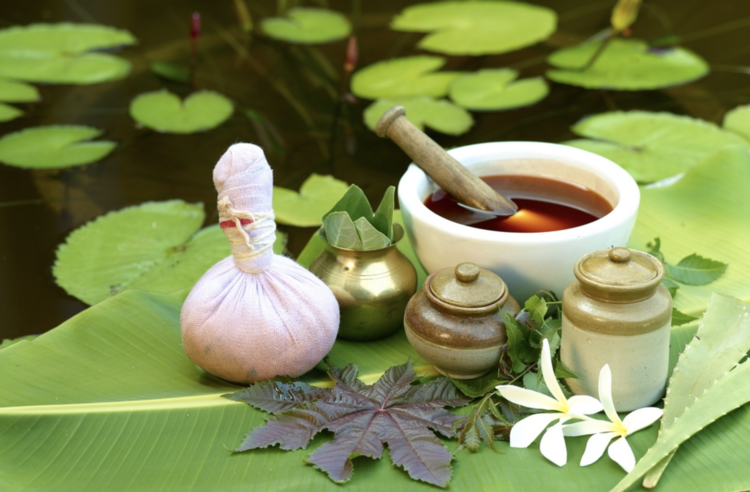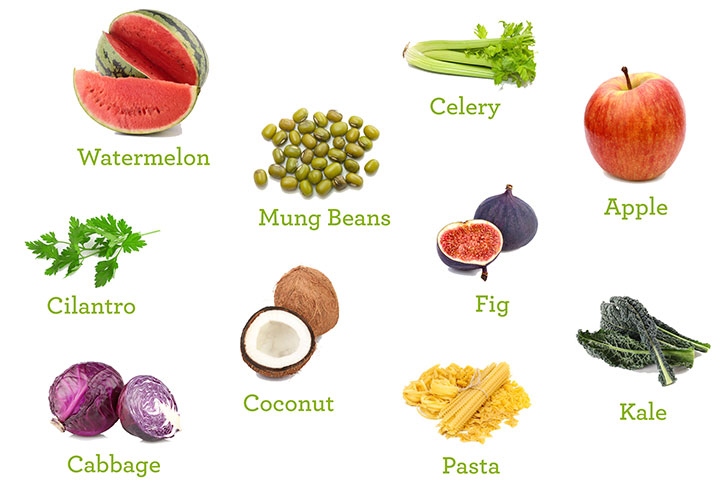Healthy life styles
RITHUCHARYA
Rithucharya is the Ayurvedic regimen during seasonal change, Ritu means season and charya means regimen. It enable us to achieve physical strength and mental capacity to fight against diseases occurs due to seasonal changes. Helps our body to cool and balance consequently it can naturally increase Pitta Dosha energy.
Ayurveda the old age science has always emphasis to maintain the health and prevent the diseases by following proper diet and lifestyle regimen, rather than treatment and cure of the diseases. People do not know the suitable type of food stuffs; dressing and other regimen to be followed in particular season. This leads to unhealthy and cause various diseases.
As per Ayurveda they are some rules to follow in each season. Scholars of Ayurveda know the entire thing that makes us healthy including habits, lifestyle, herbs, medication etc.

CLASSIFICATION OF SEASON ACCORDING TO AYURVEDA
A year is divided into two kaals (Time periods) each kaal comprises of 3 season which give a total 6 seasons in a year. Each season last for two months the body needs time to adapt it according the seasonal variations to remain healthy, fit and diseases free.
Adaan kaal/ Uttaryana/ Northern solstice (14 January to 14 July)
- Shishir ritu (winter) mid January to mid March
- Vasant ritu (spring) mid march to mid May
- Grishma ritu (summer) mid May to mid July
Visarga kaal / Dakshinayana/ Southern solstice (14 July to 14 January)
- Varsha ritu (monsoon) mid July to mid September
- Sharad ritu (autumn) mid September to mid November
- Hemant ritu (later autumn) mid November to mid January
Adaan kaal / Uttarayana/ Northen solstice
Adaan kaal indicates the northward movement of the sun. The sun and wind are powerful in that period. The sun takes away the strength of people and cooling quality of the earth.
During adaan kaal the seasonal changes in Indian subcontinent is from Shishira (winter) to vasanta (spring) and to Grishma (summer). The period occurs in mid January to mid July. When warmness and dryness in weather increases. It has an overall debilitating effect on environment to which human being is also a part.
SHISHIR RITU
Autumn is the English name of shishir ritu. Mid January to mid March is considered as shishir ritu. Which incorporate the months of magh and phalglin. This season occur dryness and dehydration, which leads to accumulations of kapha dosha and the aggravation of vatadosha
DIET PLAN : According to Ayurveda during this period the ‘sharir- bal’ or physical strength and ‘jathrangni – bal’ or digestive fire is at their maximum by virtue of the sun just coming out of its southern cycle and moving into the northern cycle it is also the time when vata dosha tends to get aggravated.
Ayurveda described do and don’t for all the season so that we can be healthy forever. On shishira ritu Ayurveda discuss six taste of food sweet, sour, salty, bitter, pungent and astringent. Foods that are sweet, sour and salty especially beneficial in cold dry winter, bitter helps to decrease dryness. Foods having katu(pungent) kashaya(astringent ) dominating rasa are to be stayed away from light and cool foods should be avoided.
LIFE STYLE: massage with oil/powder/paste and take shower with tepid water
According to modern science consumption of jamun, cherries, katola and strawberries they are healthy and boost your immunity during the flu season citrus fruit like sweet lime mandarin, oranges, tangerine and grapefruit are best eaten in winter. As they are high in antioxidants and potassium that gives us energy it also rehydrates us as we do not drink lot of water in winter.Honey, Tulasi and ginger, ghee, whole grain, jiggery, sesame, cinnamon also suggested in modern science
VASANT RITU
Vasant ritu occurs in mid March to mid May early winter and later winter. In this season the acharya tell us that cold in the atmosphere starts driving Agni inwards in the body. So we can see a depletion of warmth and heat in the extremities and the Agni begins concentrating in the koshta or Gl tract
DIET PLAN: Ayurveda advise us to avoid heavy, oily, sour, sweet taste food during this season. Heavy and sweet food increase kapha dosha accumulation. Oily and sour food increase pitta in the body. Add certain food to our diet to help control aggravated kapha add simbidhanya or millet to our diet in small quantities. Their addition can help absorb and dry out liquefied kapha. Food items tasting bitter, kattu (pungent) kashaya (astringent) should be eaten honey can also be added
LIFE STYLE: Using tepid water for bathing is good choice, exercising is must during vasant ritu. Massage powder with chandhana, kesara, agaru is suggested
Modern science scholars suggests consumption of Zucchini, yogurt, sweet potato, strawberry, papaya, neem leaves, morning flowers, jack fruit, drumstick, chikoo and drinking plenty of water is essential in our daily diet.
GRISHMA RITU
Grishma ritu is the last season of Adaan kaal which lasts from May to July during this period the pitta dosha increasing producing dehydration, exhaustion leathery, dryness in our body and lack of energy. Ayurveda advice everyone to follow the recommended diet and life style maintain our energy and health during this season.
DIET PLAN: Greasy, hot, spicy, salty and sour food items milkshake is not good otherwise it may lead to burning sensation. Foods which are sweet, unctuous, cool and fluid like rice,lentil etc. should be add. Drinking lot of water and different fluids like cold water, buttermilk, fruit, juice, meat soup, stirred curd with pepper and milk in night is good.
LIFE STYLE: Remaining in cool spots, applying sandal wood and aromatic paste over the body wearing light dresses are useful. Extreme exercise or hard work is to be avoided.
According to modern science the warm and humid weather provides a fertile environment for bacterial growth its leads to spread bacteria, virus, toxins and chemicals. Which post entering the human body causes the onset of stomach pain, nausea, diarrhoea, chickenpox, heat strokes etc. Tomatoes, zucchini, watermelon, orange, celery, honey dew, black berries are suggested.

Visarga kaal/ Dakshinayana/ southern solstice
Visarga kaal indicates the movement of the sun in southern direction. In this period the wind is not dry the moon is more powerful than sun, the earth becomes more powerful than sun and the earth becomes cool due to the clouds and rain. Strength of a person enhance during this period.
During this visarga kaal the seasonal changes occurs in the Indian subcontinent from varsha (monsoon) to sarata (autumn) and to hemanta (late autumn). This period occurs in mid July to mid January when cool sets, and due to which anabolic dominates over the catabolic activities in the environment.
VARSHA RITU
According to Ayurveda varsha ritucharya is recommended routine and life style modifications to be followed, to ward of the imbalance in the body. This season occurs the aggravation of vata and pitta dosha consequently it can lead to various diseases and condition. The food and life style should help in balancing the vitiated vata and pitta doshas and maintain a healthy body constitution. The strength of an individual is weak in this season
DIET PLAN: Salty, tarty, unctuous food and old barley, rice, wheat, ginger,black pepper, millet, honey soup, moong are good. Drink small amount of lukewarm water regularly, take easily digestible food. Fried spicy, uncooked foods are not good choice.
LIFE STYLE: Boiled water for bating and massaging is good.
Drenching in rain, napping in the day, excising, hard work, wind staying at the river bank is not good choice.
SHARAD RITU
Sharad ritu occurs in mid September to mid November. During this season, the sun turns out to be splendid and the sky stays clear. Sometimes with white cloud. The earth is smeared with wet mid. The prevalent rasa is salty and transcendent mahabhutas are Apa and Agni, the strength and energy of an individual stays medium, appeasement of vitiated vata dosha and vitiation of pitta dosha happens and movement of Agni increase amid in this season.
DIET ROUTINE: Foods having sweet, sharp, taste and cold properties are good. Wheat, green gram, sugar sweet, nectar, patola, meat of animals from dry land is to be add in your daily diet. Hot, bitter and astringent foods, fat oils, meat of aquatic creature, curd and so on.
LIFE STYLE: Wear flower garlands, applying paste of chandhana on the body. Napping during the day, exposure to sunlight and exercise is not good at that period.
According to modern science pumpkins, squash, sweet potatoes, turkeys seem to be the predominant food in most fall-themed meals. Apples, Brussels sprouts, cauliflower, dates, kale, pears, pomegranates, squash, and sweet potatoes are best choice to get enough nutrients.

HEMANT RITU
Hemant ritu occurs in mid November to mid January. Blow of cool breezes begins and chillness. Strength of an individual stays on highest grade. Vitiated pitta dosha gets assuaged. Action of Agni is increased winter season encompasses dusty environment,drop in the temperature.
DIET PLAN: Ayurveda suggest sweet and salty food. Taking amala juice on empty stomach, ghee, honey, edible oils are good choice. Have warms soups regularly, drink warm water, and consume sugar cane juice also suggested.
Fried foods, carbonated drinks, sprouts are not good in this season.
LIFE STYLE: Do regular oil massage, daily exercise and yoga, use woollen cloths.
Napping during the day is not good in this season.
According to modern science consumption of soup, cauliflower, broccoli, porridge, root vegetables, chees, egg and fish are suggested.
Refernce : https://www.ncbi.nlm.nih.gov/pmc/articles/PMC3361919/
https://www.hithayush.com/wp-admin/post.php?post=22&action=edit
